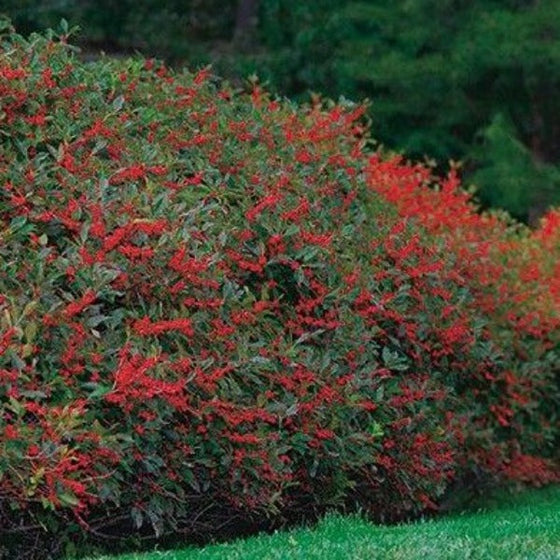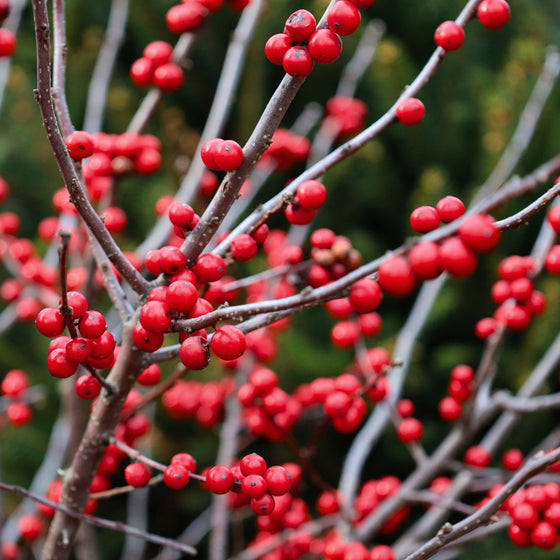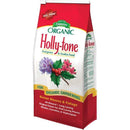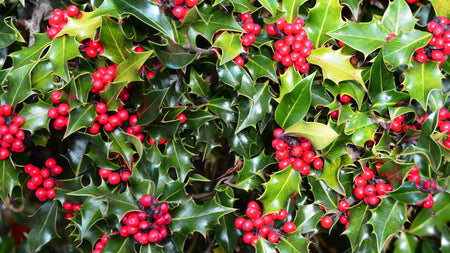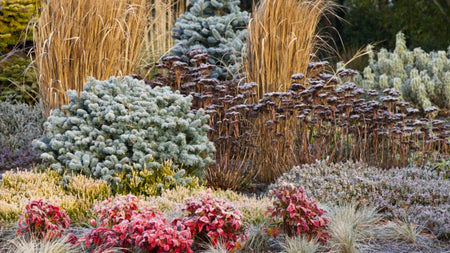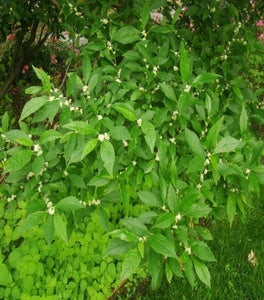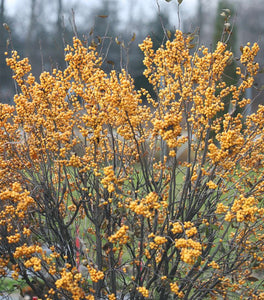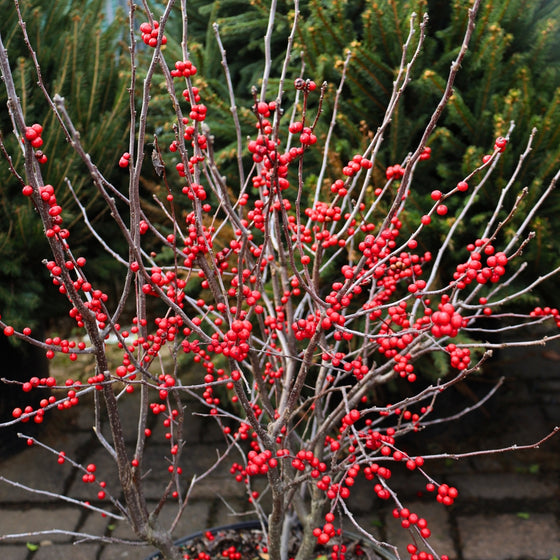
Images Depict Mature Plants
Winter Red Winterberry Holly Shrubs for Sale Online
Winter Red Winterberry Holly (Ilex verticillata 'Winter Red') is a stunning deciduous shrub known for prolific production of vibrant red berries that persist through winter, adding a burst of color to the garden when most other plants have lost their luster. The bright berries are particularly eye-catching against the backdrop of bare branches, snow, or evergreen shrubs, making this holly a must-have for creating a visually striking winter landscape. Reaching a mature height of 6 to 9 feet with a similar spread, Winter Red is ideal for use as a hedge, in mixed borders, or as a foundation planting where its year-round interest can be appreciated.
To ensure successful berry production, it is essential to plant a compatible male pollinator nearby. The best choice for pollinating Winter Red Winterberry Holly is the Southern Gentleman Winterberry Holly (Ilex verticillata 'Southern Gentleman'). This male counterpart blooms around the same time as Winter Red, providing the necessary pollen to fertilize its flowers and produce the iconic red berries. Plant Southern Gentleman within 30 to 50 feet of Winter Red to facilitate effective pollination through wind or insect activity. Without a male pollinator, Winter Red will produce flowers but not the beloved clusters of berries that attract birds and add striking color to the winter garden.
Winter Red Winterberry is adaptable to a wide range of soil conditions and thrives in full sun to partial shade, preferring moist, slightly acidic soil. Its tolerance for wet soils makes it an excellent choice for rain gardens or planting in low-lying areas where other shrubs might struggle. Winter Red Winterberry adds visual interest to your landscape. It provides an important food source for birds such as robins, cardinals, and cedar waxwings, helping support wildlife during the colder months. With the Southern Gentleman Winterberry Holly nearby, Winter Red will reliably produce an abundance of berries, making it an exceptional addition to any garden looking for year-round beauty and ecological value.
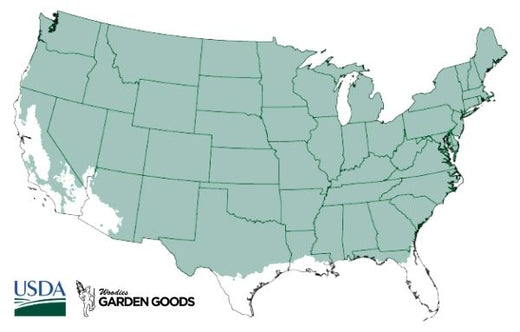
| Hardiness Zone: | 3-9 |
|---|---|
| Mature Height: | 6 to 8 Feet |
| Mature Width: | 6 to 8 Feet |
| Classification: | Deciduous shrub |
| Sunlight: | Full sun to part shade |
| Habit: | Deciduous, densely branched, shrub forming |
| Flower Color: | White but inconspicuous |
| Foliage: | New growth emerges a deep dark green, changing to a golden yellow in the fall |
| Soil Condition: | Any well drained soil but will tolerate “wet feet” |
| Water Requirements: | Water well until established |
| Uses: | Extremely attractive when used as a focal point in the mixed border, mass planting, or a specimen planting. Provides unmatched winter interest especially when planted in front of a contrasting backdrop |
How to Care for Winter Red Winterberry Holly
Before you buy an Winter Red Winterberry Holly, make sure to read about the recommended care instructions to keep this plant healthy and thriving.
How Do I Plant A Winter Red Winterberry Holly?
To plant a Winter Red Winterberry Holly, start by selecting a location that offers full sun to partial shade and has moist, slightly acidic soil. Winter Red thrives in soils that are well-drained but can tolerate wetter conditions, making it an excellent choice for rain gardens or low-lying areas in the landscape. Begin by digging a hole twice as wide and as deep as the root ball of the plant. Loosen the soil at the bottom of the hole to allow the roots to spread easily. Position the Winter Red Winterberry in the hole so that the top of the root ball is level with the ground surface, then backfill with the soil you removed, gently firming it around the roots. Once planted, water thoroughly to help settle the soil and ensure good root-to-soil contact. After planting your Winter Red Winterberry Holly, add a 2-3 inch layer of organic mulch around the base of the shrub, keeping it a few inches away from the trunk. This mulch will help retain moisture, regulate soil temperature, and reduce weeds. Space Winter Red shrubs about 6 to 9 feet apart to allow for their mature size, and consider planting a compatible male pollinator, such as Southern Gentleman Winterberry, within 30 to 50 feet to ensure proper pollination and berry production. Water the newly planted shrub regularly during its first year to establish a strong root system, especially during dry periods. Following these steps will ensure your Winter Red Winterberry grows vigorously and produces its signature vibrant berries each winter.
How Do I Water A Winter Red Winterberry Holly?
To properly water a Winter Red Winterberry Holly, you’ll need to keep the soil consistently moist, especially during the first year after planting. This helps the shrub establish a strong root system and promotes healthy growth. Water your Winter Red deeply once or twice a week, depending on rainfall and soil conditions, ensuring the water reaches the roots without oversaturating the soil. This winterberry is well-suited to wet soils and can even thrive in poorly drained areas, but avoid letting it sit in standing water for extended periods to prevent root rot. A slow, deep watering method, such as a soaker hose, is ideal for delivering moisture directly to the root zone and reducing evaporation. After your Winter Red Winterberry Holly is established, it will still benefit from regular watering during dry spells or prolonged periods of drought, particularly in the summer. Check the soil regularly by inserting your finger a few inches down; if it feels dry, it’s time to water. Applying a 2-3 inch layer of mulch around the base of the plant will help retain moisture, reduce watering frequency, and keep the soil cool. Be sure to water at the base of the shrub rather than overhead to prevent fungal issues on the leaves. Consistent and adequate watering will ensure your Winter Red Winterberry stays healthy, leading to a bountiful display of bright red berries that add beauty and interest to your winter landscape.
How Do I Fertilize A Winter Red Winterberry Holly?
To fertilize a Winter Red Winterberry Holly, begin in early spring, just before new growth appears. Use a balanced, slow-release fertilizer such as a 10-10-10 or 12-6-6 formula to provide essential nutrients for healthy growth and berry production. Apply the fertilizer evenly around the base of the plant, being careful not to let it touch the trunk to prevent root or bark damage. Spread the fertilizer in a circle extending to the drip line of the shrub, where the outer branches end, as this is where the roots will absorb nutrients best. After applying, water thoroughly to help the nutrients penetrate the soil and reach the root zone of the Winter Red Winterberry. It is also important to test your soil before fertilizing to ensure it has the right conditions for Winter Red Winterberry Holly to thrive. This shrub prefers slightly acidic soil with a pH between 5.0 and 6.5, so if your soil is too alkaline, consider adding elemental sulfur to lower the pH. Alternatively, incorporating organic fertilizers, such as compost or aged manure, can provide a gentler nutrient boost and help improve overall soil quality. Avoid over-fertilizing, as this can lead to excessive leafy growth at the expense of flowers and berries. By providing the right balance of nutrients, your Winter Red Winterberry Holly will produce lush foliage and a generous display of bright red berries, adding year-round interest and wildlife appeal to your landscape.

How Do I Prune A Winter Red Winterberry Holly?
To prune a Winter Red Winterberry Holly, it is best to do so in late winter or early spring before new growth starts. This timing ensures that you can shape the shrub and remove any dead, damaged, or crossing branches without interrupting the blooming process. Start by cutting back any weak or broken branches to their base to maintain the health and structure of the plant. Thinning out some of the older interior branches can also help improve air circulation and sunlight penetration, encouraging more vigorous new growth. Pruning also helps maintain the size and shape of the Winter Red Winterberry while ensuring it remains aesthetically pleasing in the landscape. Light pruning of Winter Red Winterberry Holly each year will encourage the development of more branches, leading to an increased number of flowers and, consequently, more berries in the fall and winter. However, avoid heavy pruning, as this can remove flower buds that develop on the previous year's growth, reducing berry production. To maintain its natural form, try not to cut more than a third of the plant in any one year. After pruning, always clean your tools to prevent the spread of disease. By following these simple steps, you can ensure that your Winter Red Winterberry Holly remains healthy, well-shaped, and full of the vibrant red berries that make it a standout feature in the winter landscape.

